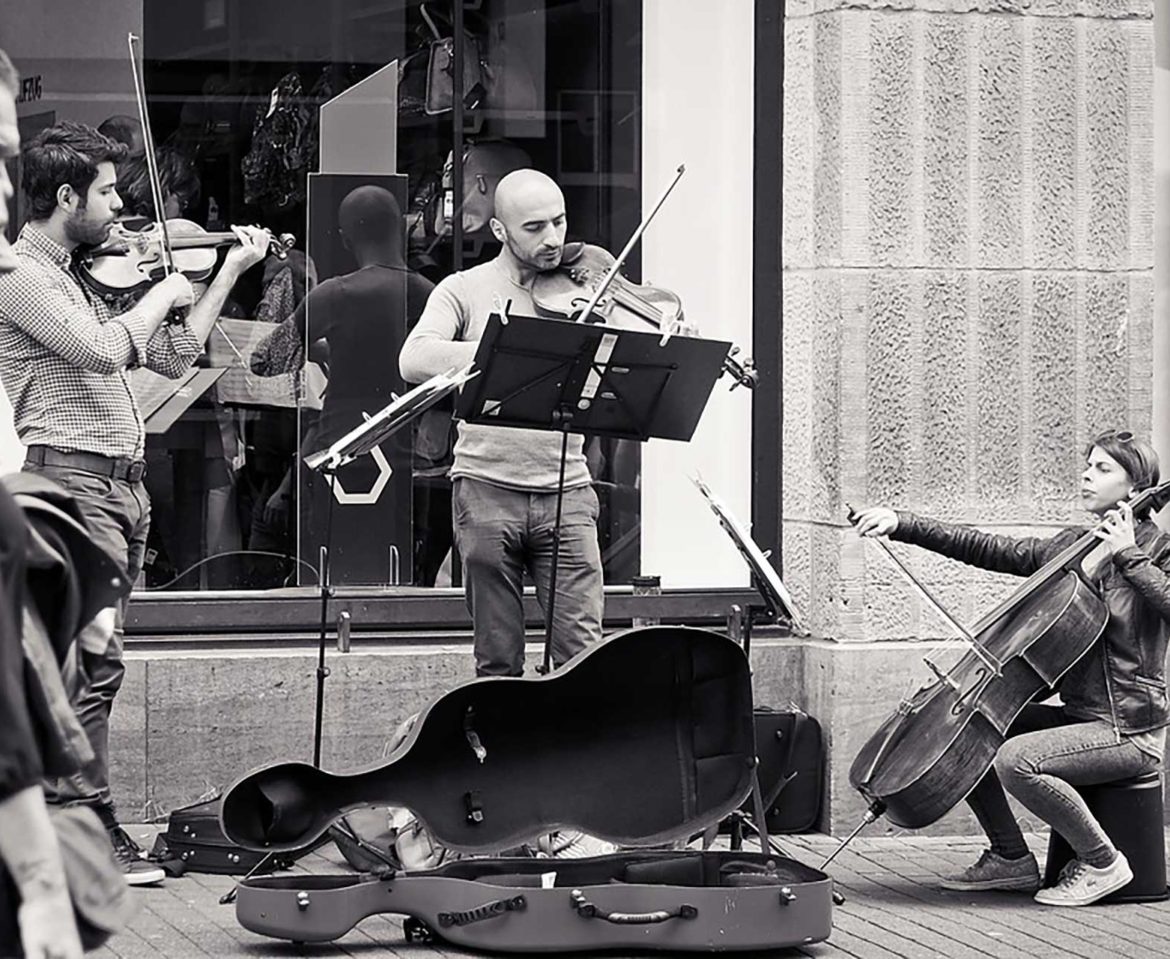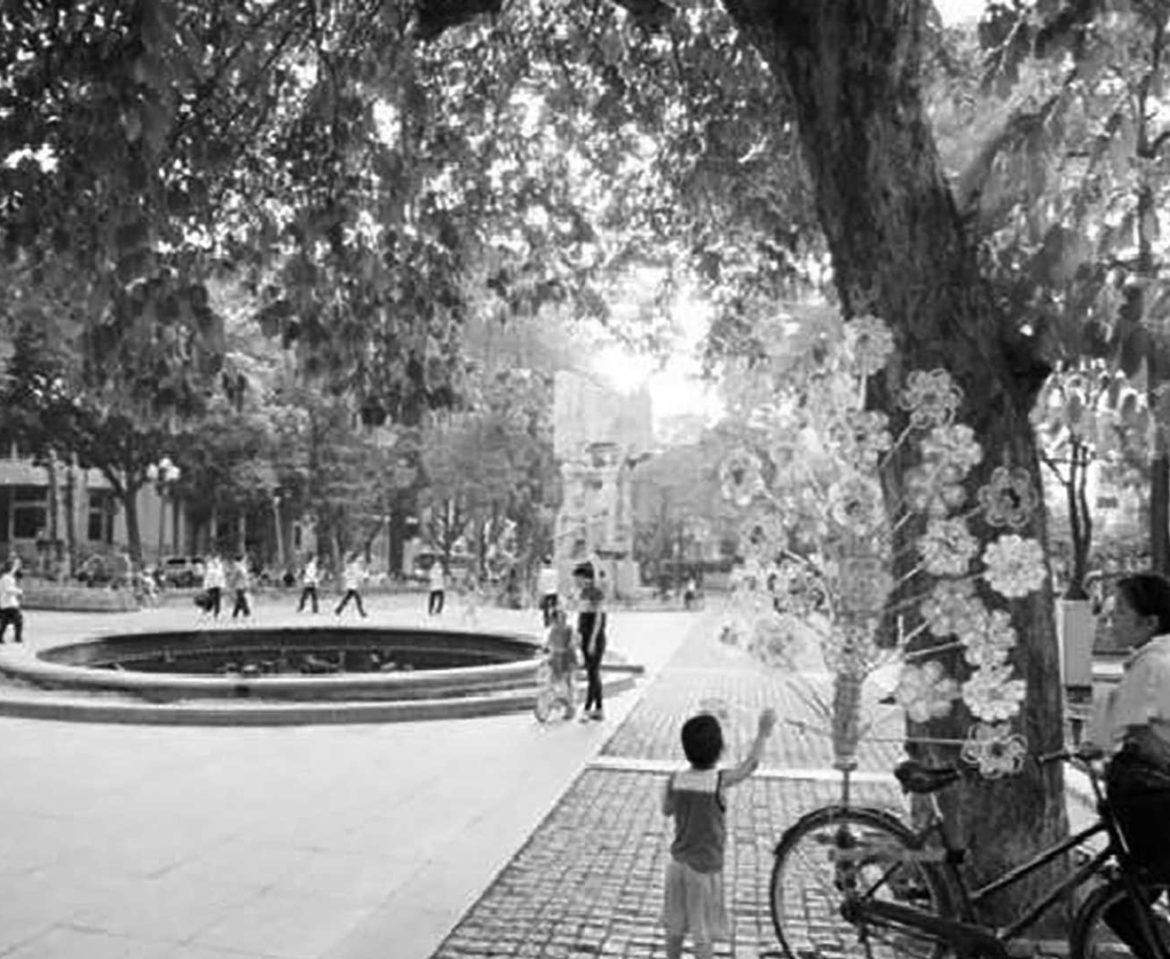The effect of music on people’s experience in a public space in both quality satisfaction and behavioural modification.
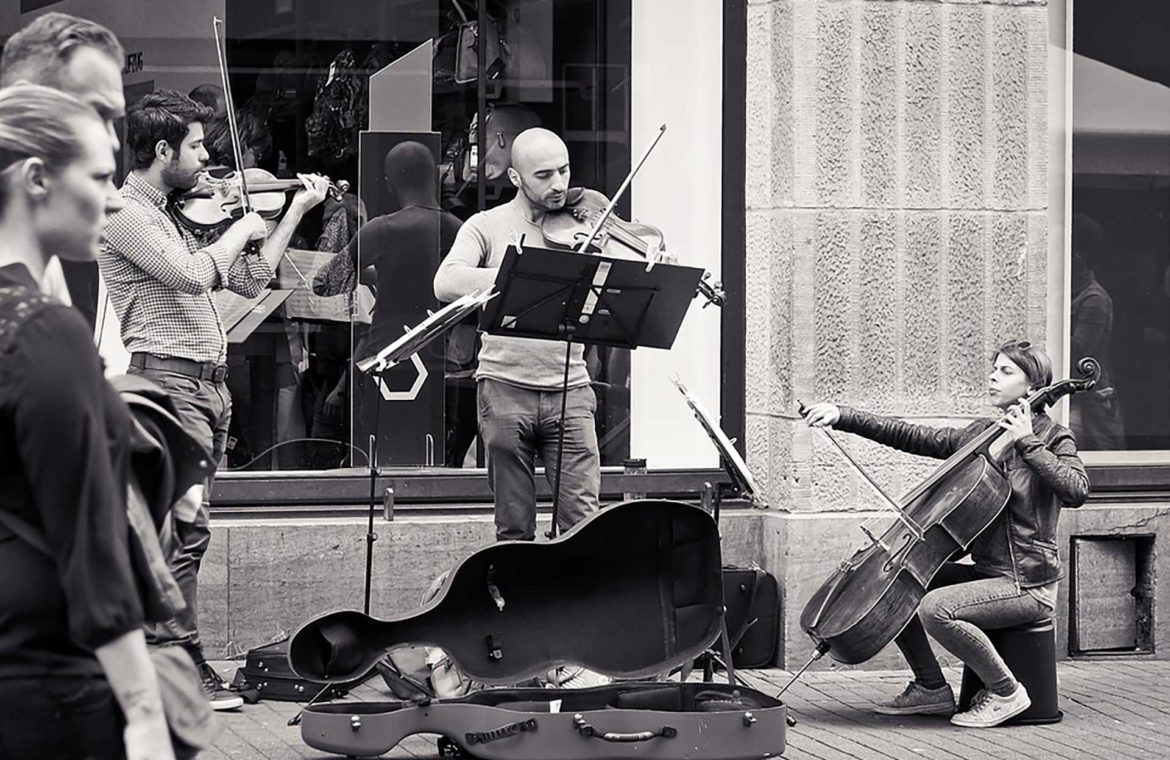
Introduction
Jan Gehl said, “A good city is like a good party, people stay longer than really necessary, because they are enjoying themselves.” Vivian Doumpa finished his sentence in her thesis about music in urban spaces saying that, “of course a good party always has a good music.” (Doumpa, 2012) these two sentences combined are quite inspiring towards a livelier future for the modern public realm.
In the past, the idea of a public space was slightly deferent from now. People could identify a public space through its use, accessibility and the amount of people who socialise within that space, rather than through design or the management of it. Moreover, a public space used to be defined as an active public place where human interact through speeches, street performance, music and art. This was a successful way to attract people and encourage them to entertain and get involved in the community. However, most of those activities were used as promoting tools for different purposes and to collect money from pedestrians passing by.
Modern urbanists are trying to bring life back to public realm in modern cities by stimulating the values of the past. Therefore, urban designers and planners renegotiate the use of creative public space and the experience it provides for users. Urbanists and artists are working together in order to find ways to regenerate the streets and public spaces of cities. Creating a new urban reality that refer to the public art, while music seems to be one of the main tools to achieve these goals.
Since ancient times, music has been a creative expression in public spaces, along with celebration and ceremonies, as the relationship between music and public spaces was strong and people were inspired everyday by the music they hear on their way to work. Thinking of the old days, I cannot help but imagine farmers singing during harvest seasons, or a lady in the corner of a street trying to sell her product by singing to get attention from people passing by.
Unfortunately, there is a lack of practical studies which examines the effects of music performance in public spaces. Therefore, in this essay my aim is to research “the effect of music on people’s experience in a public space in both quality satisfaction and behavioural modification.”
Place making and the Importance of music.
It is important at this point to identify place making; place making is concerned with the spaces in the city and the interaction of human that makes public spaces successful and great.
It brings together a diverse group of people in order to improve community’s cultural, social, economical, and ecological situation. Therefore, it includes a “work together” process to shape public spaces rooted in community based participation. Moreover, place making is more than a design process? as it involves planning, management, design, control, and most importantly creativity to achieve a shared use spaces. In other words according to Chris Eaker place making is defined as “ the art of creating public places of the soul, that uplift and help us connect to each other” (Eaker, 2008)
In modern cities music is involved in place making because of its long history; as it is believed that music is as old as the human culture, and due to the fact that it proved efficiency in terms of improving human behaviour and social life in the city. Moreover, music has a huge impact on people’s emotions and directly on the soul of the human being. Nature has a quite similar impact on people, so when music is combined with environmental experience it could change the way we feel about the space around us.
That experience was applied in the music walk event in London, organised by BBC proms season in 2012, which offered people a new experience of ongoing music while moving through different urban environments within the city. Moreover, since the launch of the music walk it has had an amazing impact on those who participated in the event, as well as on the British cultural institution. Now according to the BBC, the music walk has become a cultural event and it has been expanded to new projects in London and beyond. (University of Sussex, 2017)
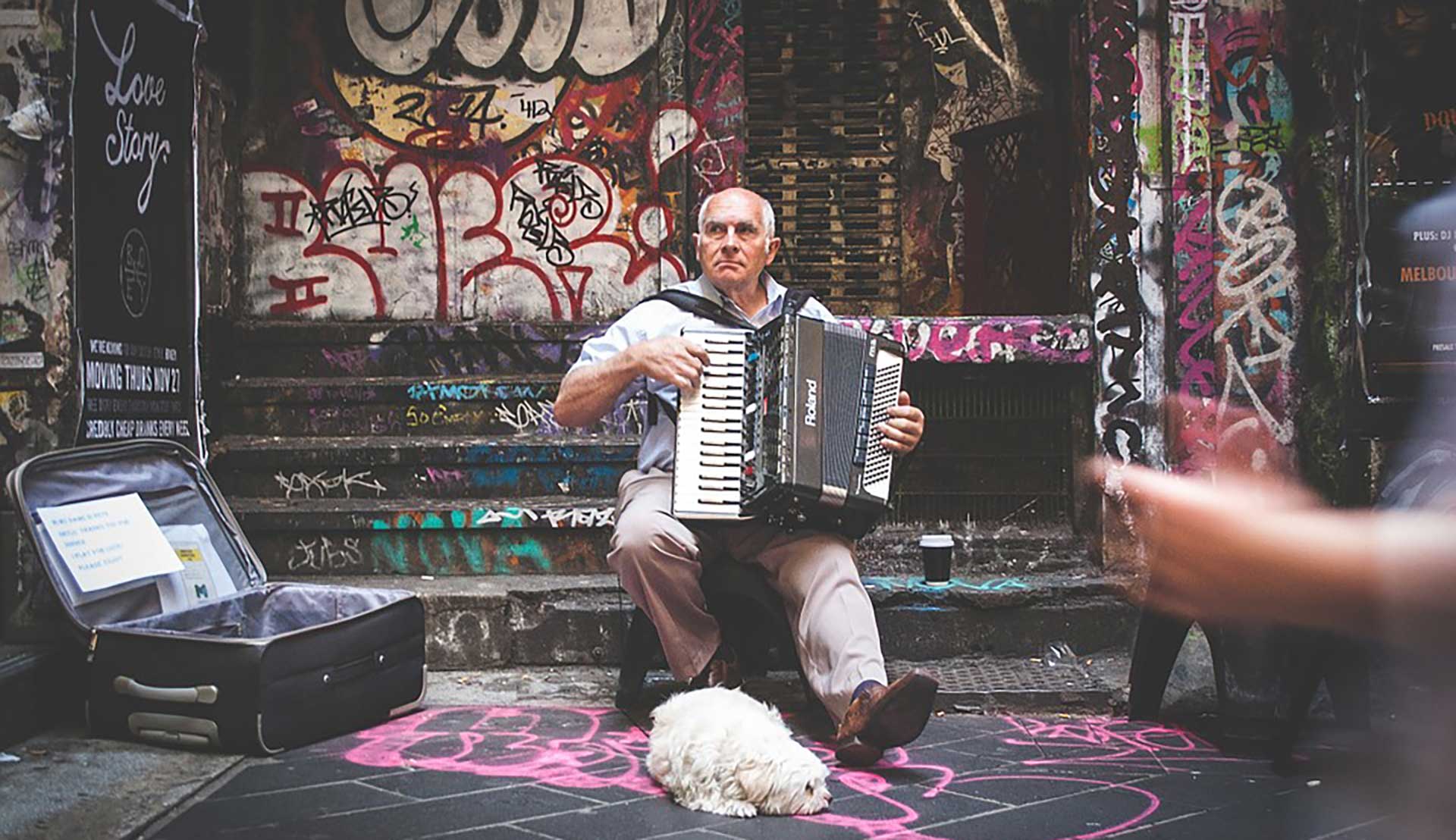
Perception and experience of place making using music
In the 70s, sociologists and philosophers first began to realise that the mental functions are important in the daily urban life. There were different opinions in regards to place making. For instance, Yi-Fu Tuan recognises public space as an object that people recognise because of their ability to move within easily and sense its characteristics, he supports his argument by saying “it is impossible to discuss experiential space without introducing the objects and places that define space” (Tuan, 1977). While other urbanists seek to relate the production of the space with the experience and perception of space, from artistic perspective.
The way people perceive this form of art in public realm has a noticeable difference from one place to another. There are many types of music that are used in public spaces in terms of production and creation, in addition to how they are implemented within the space. There is music performance and recorded music that are mostly used as a part of the main design. For example, the dancing fountains are becoming a trend in place making around the world, another type is generated music through speakers as a part of place making.
Live music performance is harmonised with the audience which gives it a substantial social aspect, as is involves the sense of vision as well as hearing. but in order to provide the experience of music in public realm in this case, the audience are supposed to be within the space in the right time with the musicians that perform. While recorded music is a main part of the place so people can enjoy it at any time within the space. The music within those places does have an effect on people’s preservation and experience of the place. For instance, if the dancing fountain in Dubai was a regular fountain without the music and dancing effects, would the space be as successful as it is now? would the people gather for hours in the space as they do now while watching the dancing water? Music in this case is a complementary tool that the public realm can not dispense.
Music effects on people’s perception of the public realm.
Music affect people’s perception of the place as it has effects on the sense of accessibility, community, sociability, activity and the use of the place. It also has an impact on how people behave within the place and how they feel in terms of comfort and relaxation. Music has always been the food of the soul. Nowadays, life puts a huge pressure on people’s daily lives and music can be a relaxing tool that can be enjoyed to get rid of the stress lunch breaks in a public space, or while moms are walking their children in a park.

Music effect on the sense of accessibility
The accessibility to public spaces is one of the important attributes related to the quality of the space and it is one of the issues that some public spaces face in terms of connections, linkages and walkability. This issue is noticeable in big cities and mostly in historical ones, where there are so many places targeted by tourists to explore. Usually, they will be unaware of some of the interesting hidden places in the old streets of the city. For instance, Prague, “the city of a hundred Spires” is known for its old town square, significant architecture, bridges and for being one of the most ancient cities in Europe. The character of this city speaks for itself, however, there are money places that people do not know about because of the way the city is originally designed.
Last summer, during my visit with friends to the city and while having coffee in one of the old town square’s coffee shops at the middle of the night, we heard nice singing coming from behind the buildings We could not resist the temptation to follow the music and we ended up in an old small square behind one of the ancient churches The place was astonishing with its architectural details and unique character, and without the singing that caught our ears while in the old square ,we as tourists could not have found our way to this place to enjoy its residence.
The music in that square gave the place a unique character as it seemed to be dancing with the lights that were swaying between the buildings, it gave the space a memorial sense and unforgettable experience. We were not the only people who followed the voice as others were entering the square looking for the music source. Moreover, it could be argued that the quality of the music has an impact on the people’s participation of the place as well.
The effect of music on the sense of comfort, community and sociability
Comfort is one of the most important attributes of a public space. Music has the ability to provide attractiveness, safety, relaxation and pleasure to the space defining its physical and social characteristic. According to Hua Tunan ‘one of the known street artists’, music allows people to identify their position in a public space providing an ability that seems to be affecting the sense of comfort. Moreover, people who participate in a public music performance or who witness the experience of live music in a public space are more likely to have the chance to get relief of stress and enjoy their residence within the space at the time.
However, some urbanists believe that if the space itself is badly maintained and lacks basic street furniture and cleanliness it might be hard to overcome these issues by simply adding the musical element.
On the other hand, when it comes to sociability and community interaction, the level of people’s feeling being welcomed to the space plays a big role in order to identify success in the public realm. According to Fred Kent “It takes a place to create a community and a community to create a place” therefore, as the relationship between people and music is strong it can help the community to create the place.
Music effect on the sense of use and activity
People around the world use public spaces in a characteristic way and to a degree that is different from one place to another. A successful public space can be identified by the amount of activities that are taking place within the space and by the extent people are using it during the day and night. These activities can be used to measure the quality of the space.
In some places urbanists’ attempt to achieve clean and safe urban environments through their designs led to the death of a public space. According to Anna Minton in her book ‘Ground control: fear and happiness in the twenty-first century city’ “the death of public life is due to the designs that sake of security and control and due to the lack of real historic and cultural identity in the planning process” (Minton, 2012). Moreover, creative activities in public spaces develop the overall impression of the space, and if music is involved in the activity it can enhance the social spirit within the public realm.
The musical activities can also be dedicated for children as teaching tools that help develop their abilities, in addition to being entertainment tools that help them have fun and socialise with other kids at the same time. For example, the musical playground created in old city park “Jan Kochanowski park” in Bydgoszcz, Poland. This is a project that was designed to feature the historical character of the city and to highlight the strong relationship between music and the city as Poland is known as the Music district. The new music park provides a place to walk, relax and access to weather resistant outdoor musical instruments that makes the place enjoyable for children and daily visitors.
Moreover, “Places can be made livelier by establishing cultural activities” (Landry, 1996). The activity character of music performance in public spaces is a public activity as well as a private one, for the audience who are enjoying the music for free it is a public experience while for the musicians it is a private activity that involves creativity and self-satisfaction.
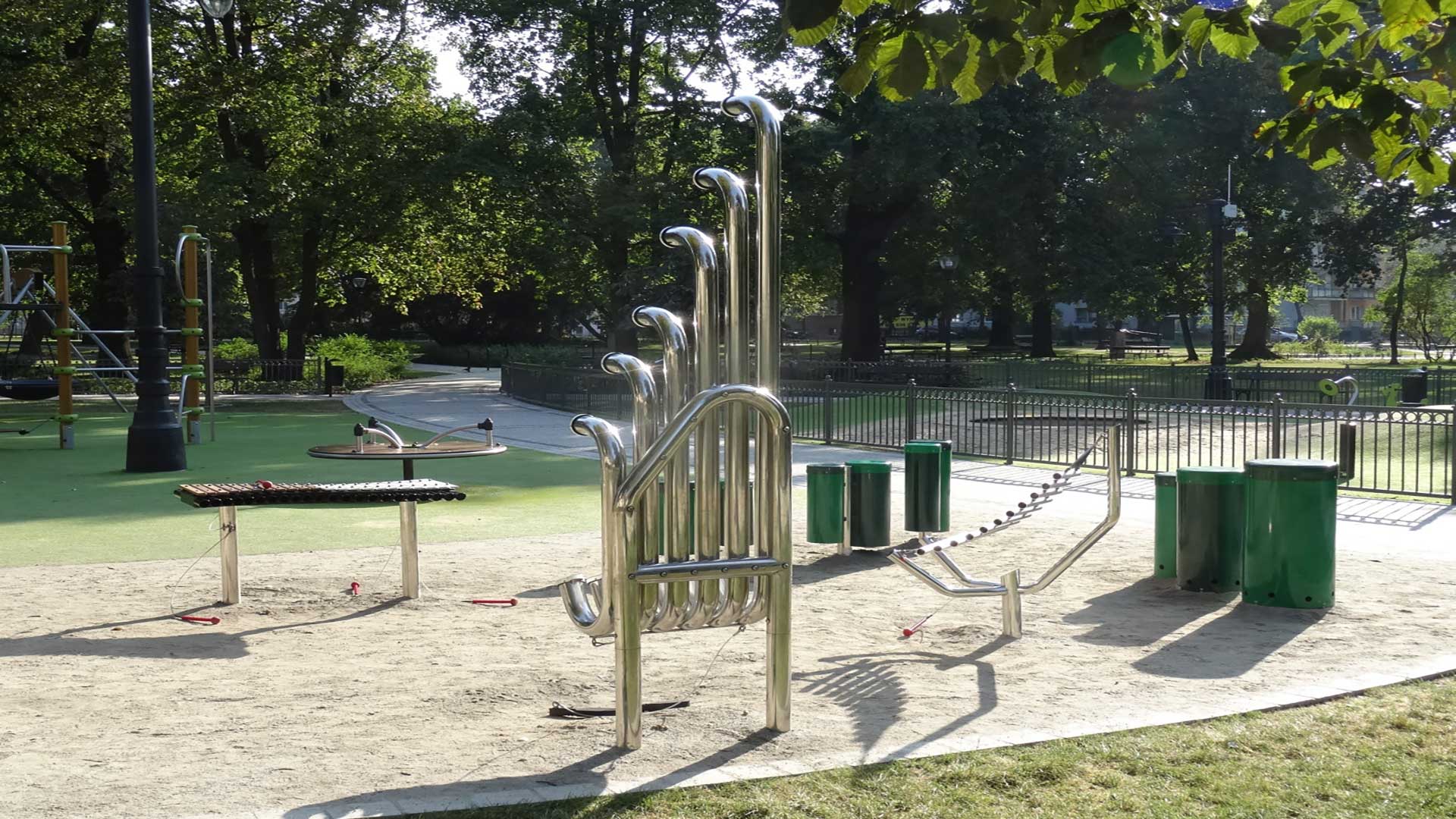
The fun theory
While progressing in the essay research, the fun theory came along as a supporter for the aim of the essay. The fun theory simply is changing the human behaviour to the better by making it fun to do. It is used by many companies for many purposes such as safety, health, and raising the environmental awareness.
Music is widely involved in this theory especially when it used to change people’s behaviour in public spaces. For instance, there is an experiment called the piano stairs,which is based on implementing devices in the steps of a stair to make it give piano sounds when people use it. Piano stairs were used in many places, one of them was in a metro station next to an escalator, where 66% more than normal, people chose the stairs over the escalator. Music proved that it can change people’s behaviour and the way they react to the space towards a better and healthier behaviour.
In aother experiment, music was used in a bottle bank in one of Sweden’s streets, where the machine was designed to be like the music box but instead of inserting coins’ people had to recycle bottles and it proved efficiency in this occasion as well. In addition, the music coming from the bottle bank encouraged people passing by to stop and enjoy some time of socialising with others and relaxing on the sound of the music.
Conclusion
Combining music with urban design creates an experience that helps to restore the mind from mental strains and provides a mental satisfaction of the place. It also delivers calming, inspiration, environment consummation and alertness. When it comes to children’s experience it could encourage learning and inquisitiveness through activities that are generated by music such as the piano stairs and the musical playground, it also helps to develop an emotional and behavioural connection to the surrounding world as much as developing their mental abilities to perceive the nearby social and biophysical environments.
On the other hand, music should be a part of place making and not as a single item. It works better when combined with other elements such as water, art, and green infrastructure. Using music to improve the quality of a public space should also come together with being attractive and safe for people to use and interrelate.
In terms of the attractiveness of public spaces, music plays a positive role to change the perception that people have on the space., Music plays with our emotions and alerts the mind to the small beautiful details that are surrounding us and which we do not notice normally.
Bibliography
Doumpa, V. (2012, 08). Music in public spaces, changing perception, changing urban experience. Utrecht, Netherlands.
Eaker, C. (2008, 10 16). what is placemaking? Retrieved from The art of placemaking: placemaking.wordpress.com
Landry, C. (1996). The art of regeneration urban renewal through cultural activity. London: Comedia.
Minton, A. (2012). Ground control: fear and happiness in the twenty-first-century city. London: penguin books.
percussion play. (n.d.). percussion play. Retrieved 2017, from musical playground created in old city park: percussionplay.com
place making. (2017). Retrieved 05 15, 2017, from rethink urban: rethinkurban.com
Tuan, Y.-F. (1977). Space and place: humanistic perspective. University of Minnesota press.
University of Sussex. (2017). Music walk, new music for public spaces. Retrieved 05 16, 2017, from University of Sussex: www.sussex.ac.uk
